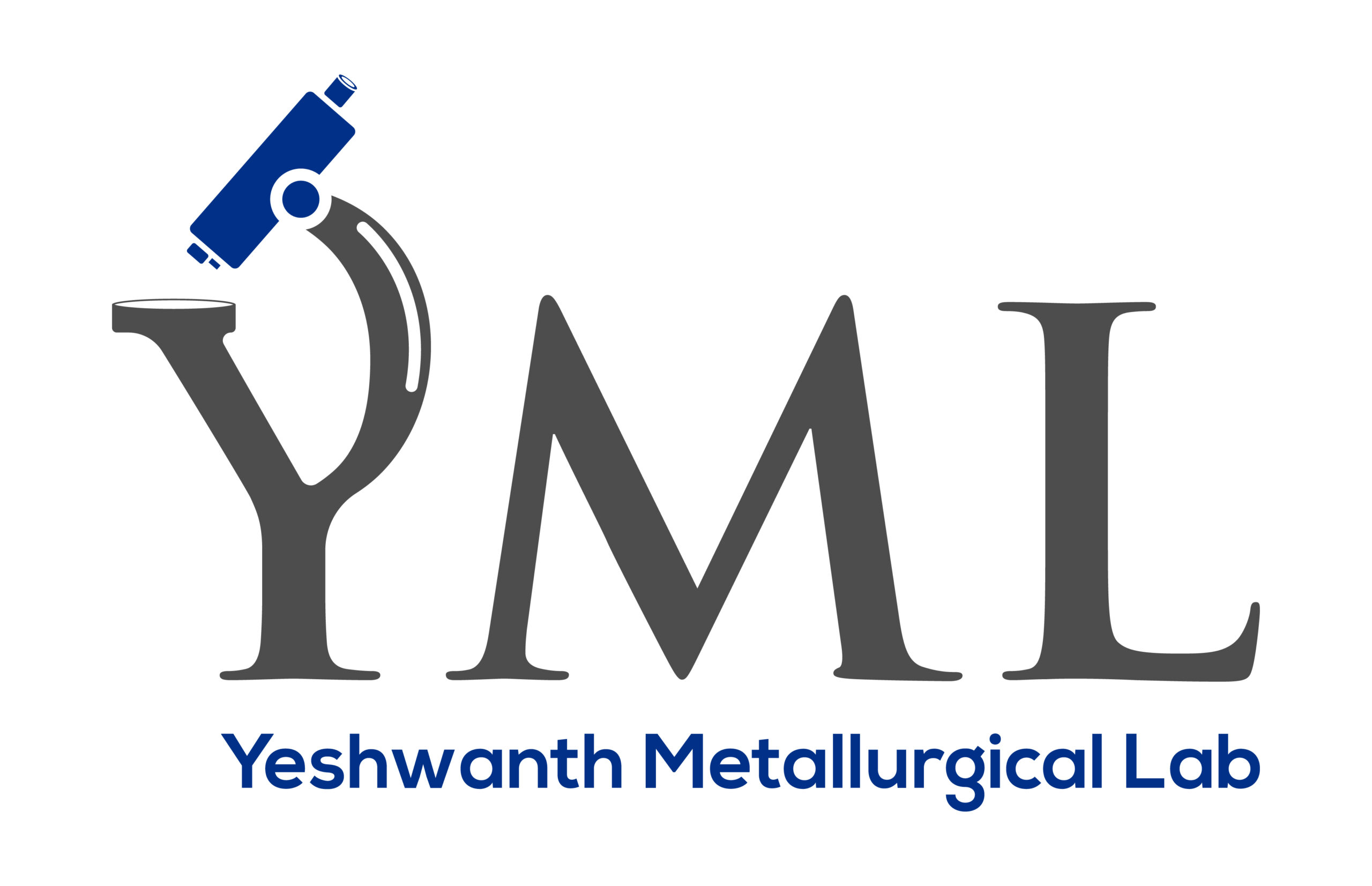Mechanical Testing
Whether you’re working with Mild steel, sainless steel, tool steel, Low alloy steel or other metals, our laboratory is equipped to handle a wide range of mechanical testing to assess the strength, durability, and behavior of your materials under various conditions.
Our Mechanical Testing Services Include:
Tensile Testing
Benefits: Understand material durability and elasticity
Impact Testing
Benefits: Determine the material's fracture resistance and ability to withstand dynamic stresses.
Hardness Testing
Types of Hardness testing - Microvickers Hardness tester, Rockwell Hardness tester, Brinel Hardness Tester and Vickers Hardness tester.
Benefits: Identify wear resistance and material durability.
Bend and Re-bend Testing
Benefits: Assess flexibility and resistance to crack formation during bending processes.
Compression Testing
Benefits: Understand material behavior under compressive stress.
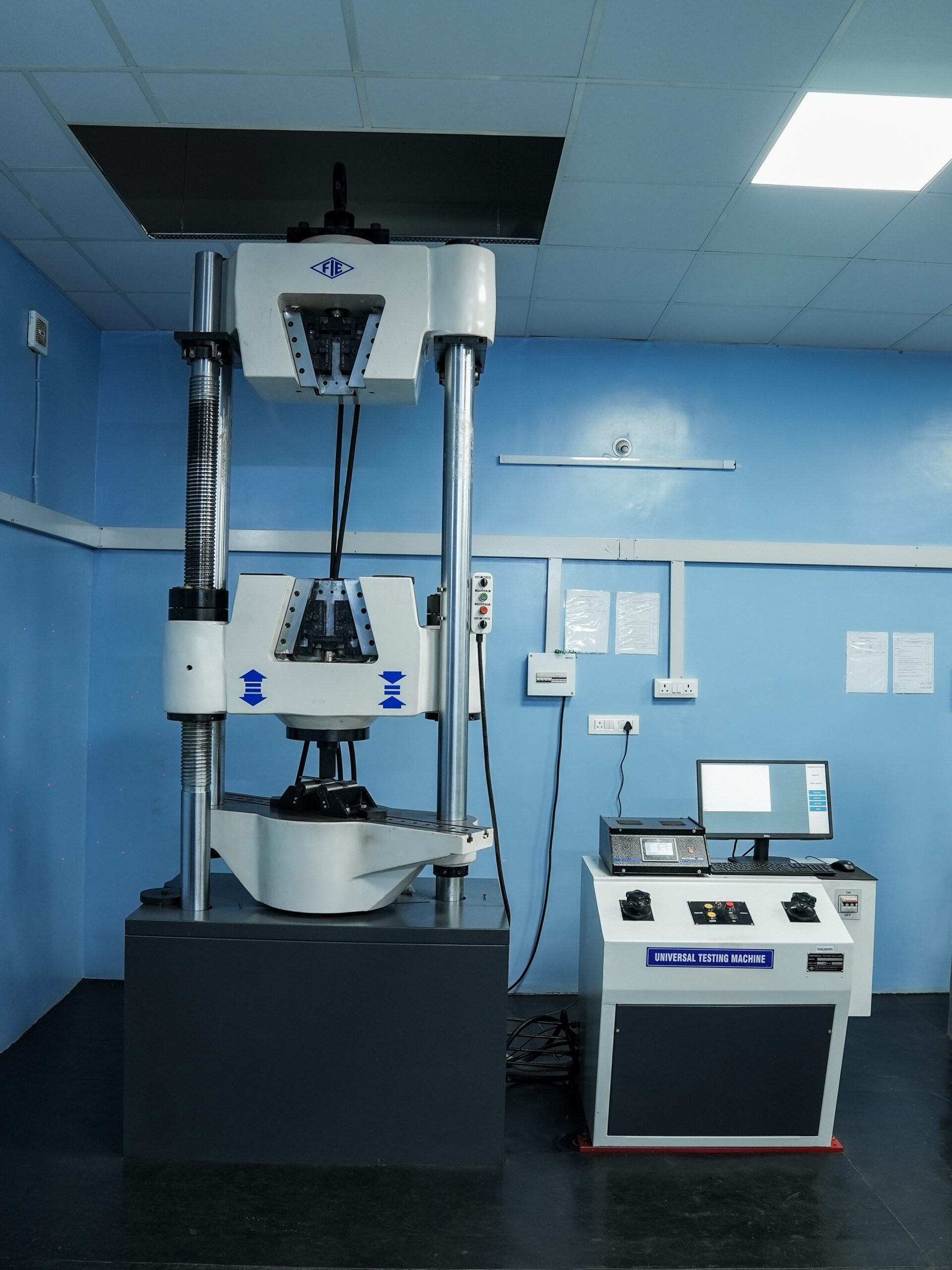
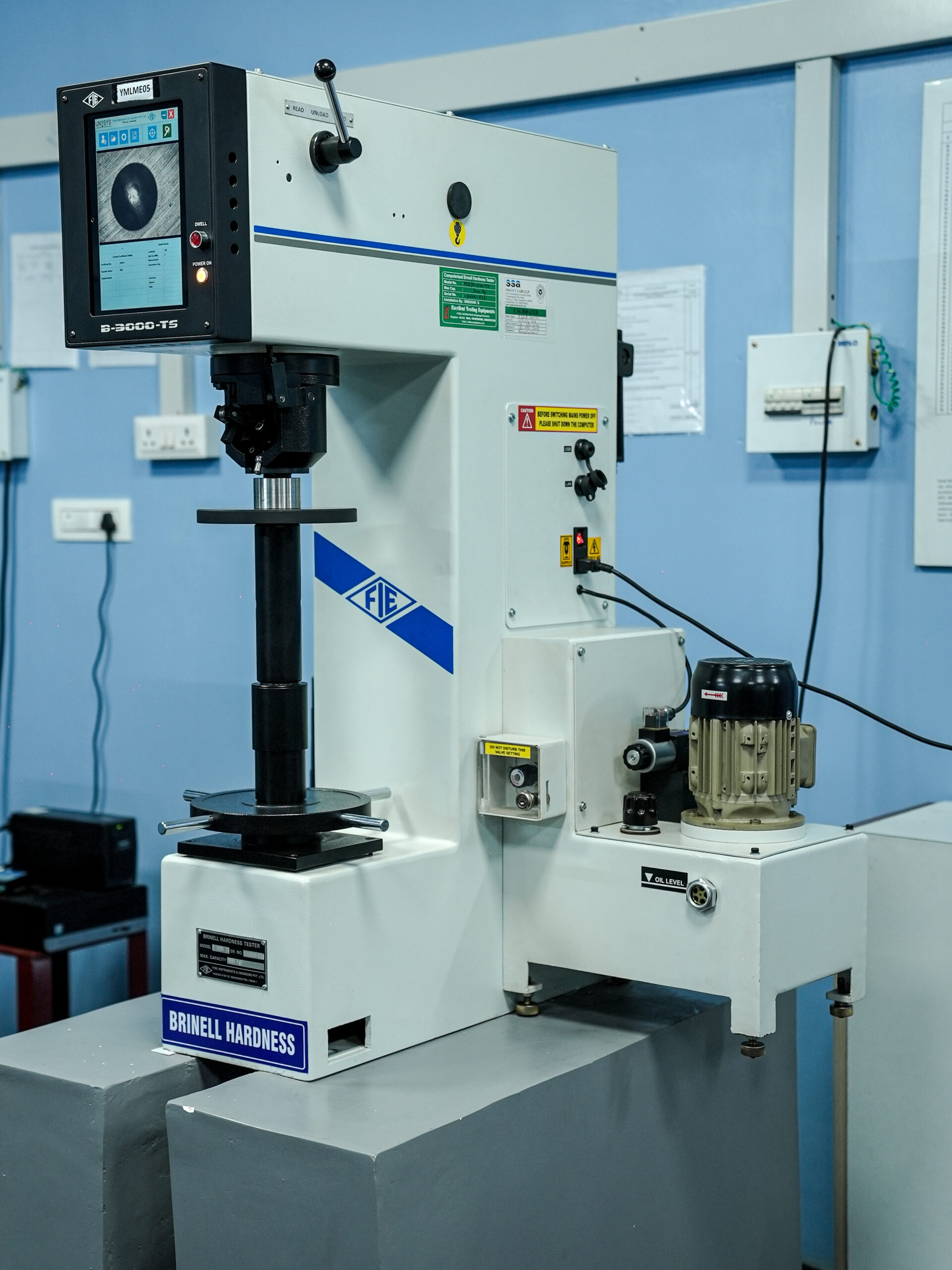
Chemical Testing
- The energy of the Spark causes the electrons in the sample to emit light which is converted into a Spectral Pattern.
- A Solid sample is placed on a electrode an Arc -Spark discharge provides sufficient energy to promote the electrons of atoms into high energy levels.
- A Chemical test helps to determine the Presence or Concentration of Specific Compounds in a Sample by observing how it reacts with other Chemicals
- This process is used to analyze a materials composition and verify if it meets required Standards.
- Various Chemical Testing methods are used across a wide range of industries to help manufacturers and suppliers ensure their Products comply with regulatory safety requirements.
There are different types of Chemical analysis including.
- Qualitative Chemical analysis ,Determines which Compounds or elements are present in a Sample.
- Classical analysis also known as wet Chemical analysis, this technique uses Chemical reactions between the material being analyzed and a reagent
- Gravimetric analysis Determines the amount of material present by weighing the Sample before and / or after some transformation.
- Volumetric analysis Relies on a critical volume measurement.
OES is the reference analysis Technique for Elemental analysis and also for:
- Stability, precision, low detection limits and accuracy
- Configured and Calibrated in the factory
- Continuous up-grade possibilities
- Easy integration to increase productivity


For Metals & Alloys
| Ferrous Base | Copper Base | Nickel Base | Aluminium Base |
|---|---|---|---|
| Carbon Steel | Brass | Inconnel | Pure Aluminium |
| Low alloy Steel with Nitrogen | Gun Metal | Nickel Low Alloy | Aluminium & Magnesium |
| Free Cutting Steel | Aluminium Bronze | Nickel Monele | Aluminium & Silica |
| Stainless Steel with Nitrogen | Bronze | Nickle Nimonic | Aluminium & Copper |
| Duplex Stainless Steel | Phosphorus Bronze | Nickel Waspalloy | Aluminium & Zinc |
| Cast Iron with Magnesium | Tin & Lead Bronze | Nickel Hastalloy | |
| Tool Steel | Nickel Marmaalloy |
- Low detection limit and high analytical performance make it a cost-effective option for Nitrogen analysis.
- Sealed argon system reduces maintenance costs and allows for Low level Nitrogen analysis. Wide wave length range has a new plasma to view angle.
- Intuitive user interface that makes analysis easy. We can analize the Nitrogen Content in Both Steel & Stainless Steel Samples . In Cast Iron Mg content can be viewed in our Spectrometer. The range is 0.0005-0.125%
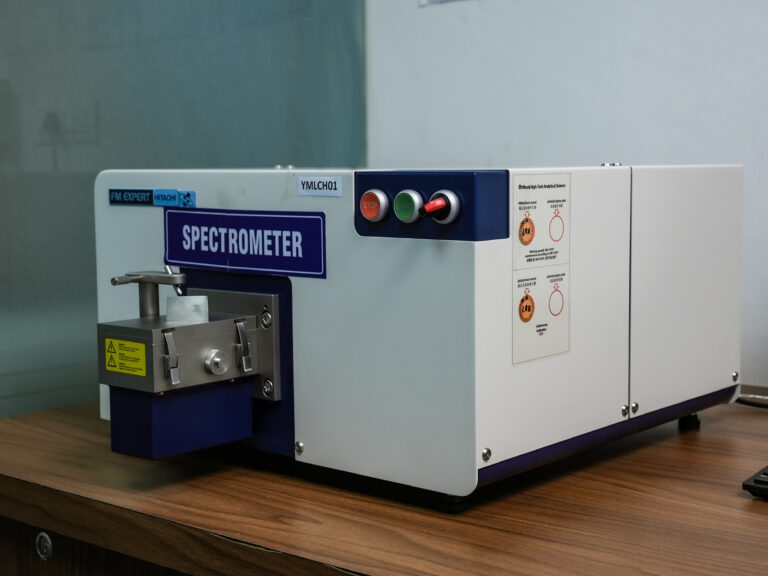
Metallurgy Testing
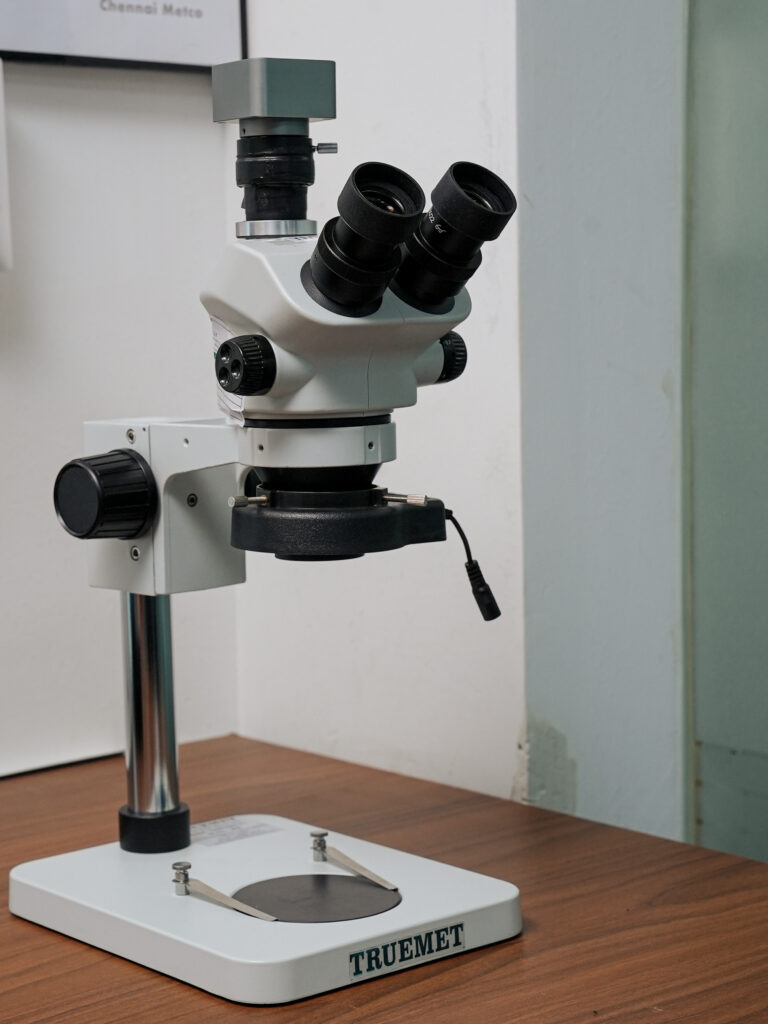
All Metallurgical testing and analysis done under the Microscope
Yeshwanth Metallurgical Lab prepares all the required samples in-house, avoiding possible mishaps that cause delays. Check our exhaustive list of Metallurgy testing capabilities:
Metallurgical Testing Include
- Microstructure
- Microstructure Analysis
- Grain size
- Austenitic grain size
- Inclusion Rating
- Decarburization depth
- Total case depth (TCD)
- Effective case depth (ECD)
- Forging Analysis
- Grain flow test
- Failure analysis
- Macrostructure Analysis
- Welding inspection
- Welding Qualification
- Welding dimension
- Grinding Burn testing
- Nitriding Inspection
- Particle size count
- Brazing inspection
- Coating thickness
- Electro plating thickness
- Heat treatment process analysis
- Phase Analysis
- Porosity and Void Analysis
- Cast iron - Graphite Flakes, Nodularity count and size
Corrosion Testing
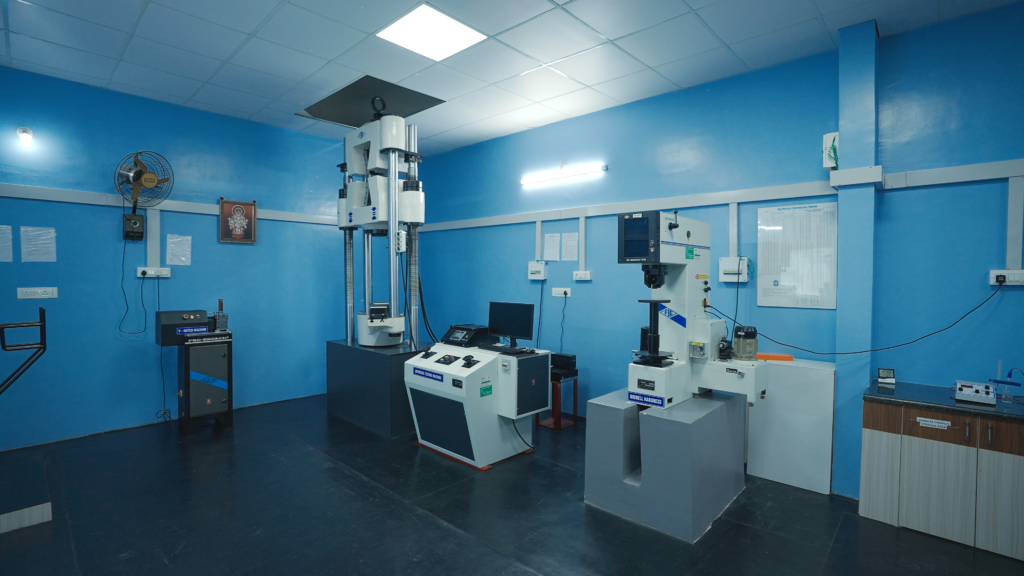
Corrosion tests cover:
Intergranular Corrosion Test (IGC) as per ASTM A262
Practice –B – Ferric sulphate –Sulphuric Acid Test
Practice –C – Nitric Acid Test
Practice –E – 16 % Copper –Copper Sulphate Test
Practice –F – 50 % Copper –Copper Sulphate Test
Pitting & Crevice Corrosion test, as per ASTM G48
Method B – Ferric chloride crevice test
Method C – Critical pitting temperature test for nickel-base and chromium-bearing alloys.
Method D – Critical Crevice temperature test for nickel-base and chromium-bearing alloys.
Method E – Critical pitting temperature test for stainless steel
Evaluation of detrimental intermetallic phases in Duplex Austenitic/ferritic Stainless steels as per ASTM A923
Mass of coating
- Zinc Coating
- Manganese phosphating
- Blackening
Jominey End Quench
The Jominy end quench test is the standard method for measuring the hardenability of steels. This describes the ability of the steel to be hardened in depth by quenching.
Corrosion Testing
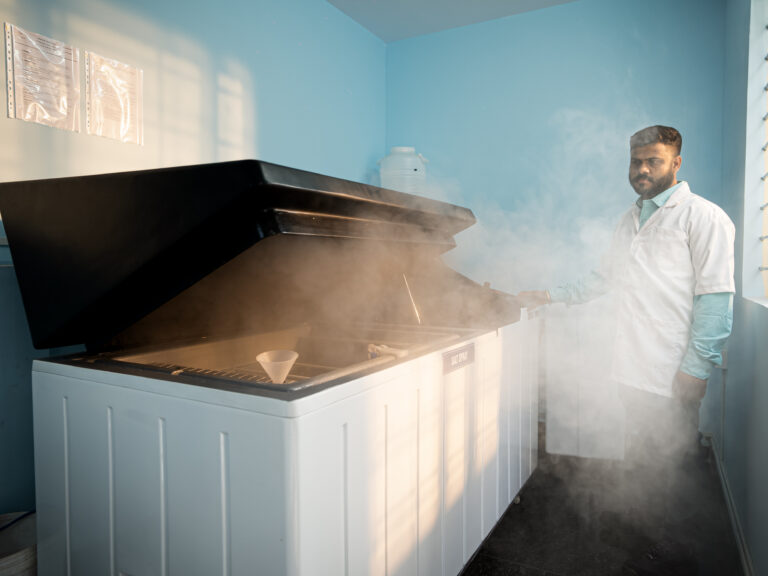
Water Testing
Parameters : Some common water quality parameters include PH , Conductivity, dissolved oxygen,Chlorine,salinity , acidity, alkalinity , Total dissolved solids and odour
- PH
- Conductivity
- Dissolved Oxygen
- Chlorine
- Salinity
- Acidity
- Alkalinity
- Total Dissolved Solids
- Odour
The first practical requirement is a water analysis. As mentioned above the water quality required depends on the purpose. Therefore as a first step raw water needs to be analyzed completely. PH indicates the water’s acidity or alkalinity. Electrical Conductivity indicates the water’s Salinity and total dissolved Solids. Hardness caused by high levels of minerals like magnesium and Calcium ,Which can create Scale deposits.
Oil Testing
There are three categories of oil analysis fluid properties , contamination and Wear Debris.
Fluid Properties
Contamination
Viscosity
In Lubrication Oil other parameters like.
- Acid Number
- Flash Point
- Fire Point
- Base Number
- Moisture analysis
- Dropping Point
- Density
Plastics and Rubbers
- Identification of polymer by Chemical tests
- Identification of polymer by Infrared spectrophotometry
- Melt Flow Index
- Density / Specific gravity
- Melting Point / Softening Point
- Hardness by Durometer Shore A & B
- Water Absorption of Plastics
ROHS Testing
These substances include the following
- Cadmium
- Lead
- Hexavalent Chromium
- Mercury
- Poly brominated Biphenyls (PBB)
- Poly brominated diphenyl ethers (PBDE)
- Bis (2-eithylhexyl) phthalate (DEHP)
- Benzyl butyl phthalate (BBP)
- Dibutyl phthalate (DBP)
- Diisobutyl phthalate (DBP)
ROHS Stands for restriction of Hazardous Substances. It limits the use of hazardous substances in electronic equipment to ensure safety and environment sustainability.
NDT TESTING
- Magnetic partical inspection - MPI
- Fluorescent penetrant testing - FPI
- Dry penetrant testing - DP
- Ultrasonic testing - UT
Mechanical Testing
Mechanical Testing
Whether you’re working with Mild steel, sainless steel, tool steel, Low alloy steel or other metals, our laboratory is equipped to handle a wide range of mechanical testing to assess the strength, durability, and behavior of your materials under various conditions.
Our Mechanical Testing Services Include:
Tensile Testing
Benefits: Understand material durability and elasticity
Impact Testing
Benefits: Determine the material's fracture resistance and ability to withstand dynamic stresses.
Hardness Testing
Types of Hardness testing - Microvickers Hardness tester, Rockwell Hardness tester, Brinel Hardness Tester and Vickers Hardness tester.
Benefits: Identify wear resistance and material durability.
Bend and Re-bend Testing
Benefits: Assess flexibility and resistance to crack formation during bending processes.
Compression Testing
Benefits: Understand material behavior under compressive stress.
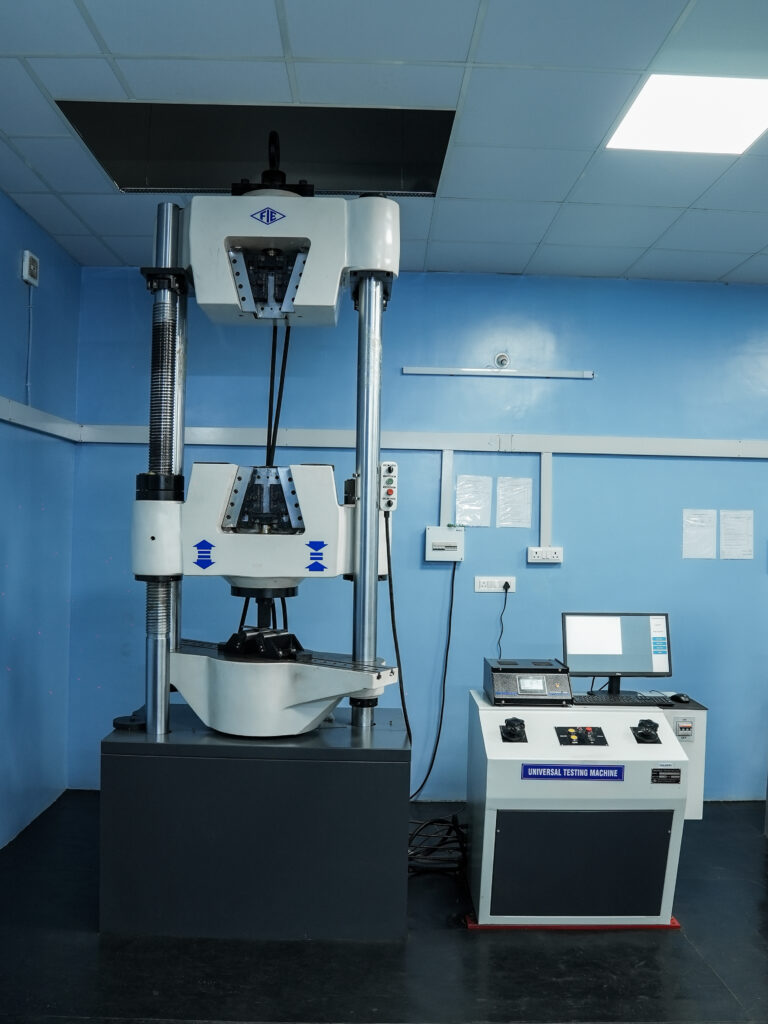
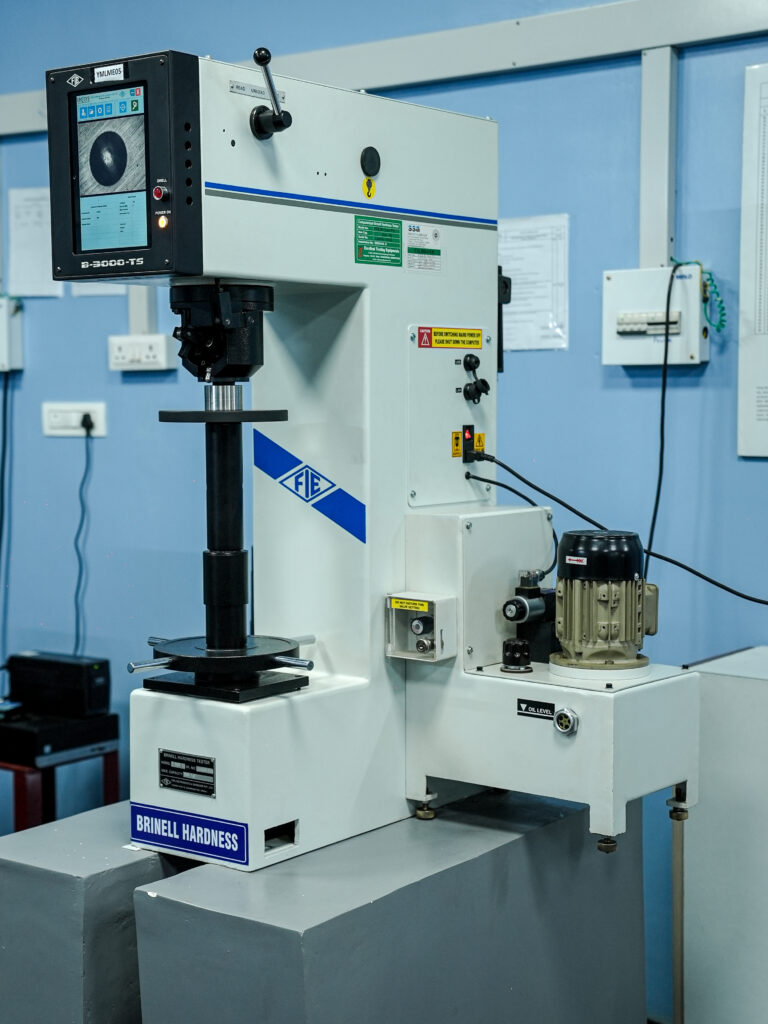
Chemical Testing
Chemical Testing
- The energy of the Spark causes the electrons in the sample to emit light which is converted into a Spectral Pattern.
- A Solid sample is placed on a electrode an Arc -Spark discharge provides sufficient energy to promote the electrons of atoms into high energy levels.
- A Chemical test helps to determine the Presence or Concentration of Specific Compounds in a Sample by observing how it reacts with other Chemicals
- This process is used to analyze a materials composition and verify if it meets required Standards.
- Various Chemical Testing methods are used across a wide range of industries to help manufacturers and suppliers ensure their Products comply with regulatory safety requirements.
Whether it’s assessing intermetallic phases or evaluating critical pitting temperatures, our lab ensures reliable insights for material sustainability.
There are different types of Chemical analysis including.
- Qualitative Chemical analysis ,Determines which Compounds or elements are present in a Sample.
- Classical analysis also known as wet Chemical analysis, this technique uses Chemical reactions between the material being analyzed and a reagent
- Gravimetric analysis Determines the amount of material present by weighing the Sample before and / or after some transformation.
- Volumetric analysis Relies on a critical volume measurement.
OES is the reference analysis Technique for Elemental analysis and also for:
- Stability, precision, low detection limits and accuracy
- Configured and Calibrated in the factory
- Continuous up-grade possibilities
- Easy integration to increase productivity
For Metals & Alloys
| Ferrous Base | Copper Base | Nickel Base | Aluminium Base |
|---|---|---|---|
| Carbon Steel | Brass | Inconnel | Pure Aluminium |
| Low alloy Steel with Nitrogen | Gun Metal | Nickel Low Alloy | Aluminium & Magnesium |
| Free Cutting Steel | Aluminium Bronze | Nickel Monele | Aluminium & Silica |
| Stainless Steel with Nitrogen | Bronze | Nickle Nimonic | Aluminium & Copper |
| Duplex Stainless Steel | Phosphorus Bronze | Nickel Waspalloy | Aluminium & Zinc |
| Cast Iron with Magnesium | Tin & Lead Bronze | Nickel Hastalloy | |
| Tool Steel | Nickel Marmaalloy |
The Equipment Support for the analysis of Nitrogen at low levels with the new CCD Optics System. Resulting in excellent analytical performance with low detection limits over the whole wave length range nitrogen analysis detection limit of just 30 ppm. Can analyze Nitrogen in metal production at levels as low as 30 ppm.
- Low detection limit and high analytical performance make it a cost-effective option for Nitrogen analysis.
- Sealed argon system reduces maintenance costs and allows for Low level Nitrogen analysis. Wide wave length range has a new plasma to view angle.
- Intuitive user interface that makes analysis easy. We can analize the Nitrogen Content in Both Steel & Stainless Steel Samples . In Cast Iron Mg content can be viewed in our Spectrometer. The range is 0.0005-0.125%

Metallurgy Testing
Metallurgy Testing
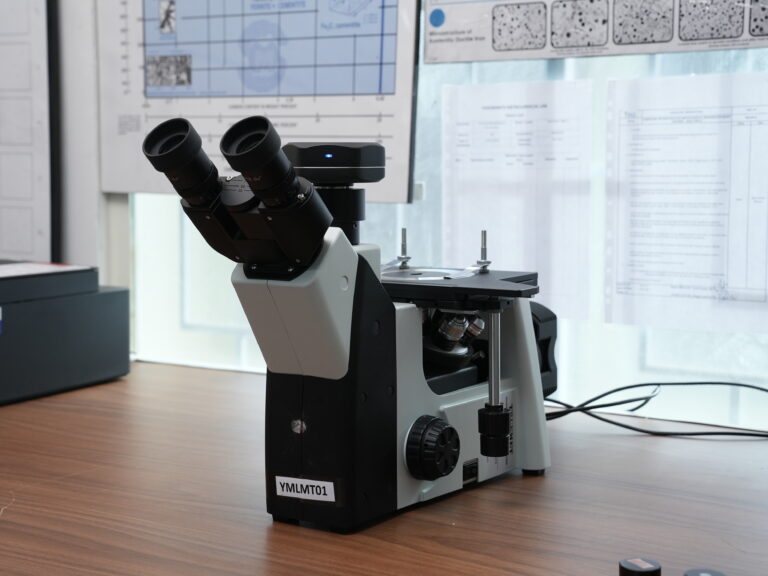
All Metallurgical testing and analysis done under the Microscope
Yeshwanth Metallurgical Lab prepares all the required samples in-house, avoiding possible mishaps that cause delays. Check our exhaustive list of Metallurgy testing capabilities:
Metallurgical Testing Include
- Microstructure
- Microstructure Analysis
- Grain size
- Austenitic grain size
- Inclusion Rating
- Decarburization depth
- Total case depth (TCD)
- Effective case depth (ECD)
- Forging Analysis
- Grain flow test
- Failure analysis
- Macrostructure Analysis
- Welding inspection
- Welding Qualification
- Welding dimension
- Grinding Burn testing
- Nitriding Inspection
- Particle size count
- Brazing inspection
- Coating thickness
- Electro plating thickness
- Heat treatment process analysis
- Phase Analysis
- Porosity and Void Analysis
- Cast iron - Graphite Flakes, Nodularity count and size
Corrosion Testing

Corrosion tests cover:
Intergranular Corrosion Test (IGC) as per ASTM A262
Practice –B – Ferric sulphate –Sulphuric Acid Test
Practice –C – Nitric Acid Test
Practice –E – 16 % Copper –Copper Sulphate Test
Practice –F – 50 % Copper –Copper Sulphate Test
Pitting & Crevice Corrosion test, as per ASTM G48
Method B – Ferric chloride crevice test
Method C – Critical pitting temperature test for nickel-base and chromium-bearing alloys.
Method D – Critical Crevice temperature test for nickel-base and chromium-bearing alloys.
Method E – Critical pitting temperature test for stainless steel
Evaluation of detrimental intermetallic phases in Duplex Austenitic/ferritic Stainless steels as per ASTM A923
Corrosion Testing
Corrosion Testing
Exposure periods: Typically 1 hour to 1000 hours

Others
Mass of coating
- Zinc Coating
- Manganese phosphating
- Blackening
Jominey End Quench
The Jominy end quench test is the standard method for measuring the hardenability of steels. This describes the ability of the steel to be hardened in depth by quenching.
The test is conducted by first heating the specimen, then quenching, and finally grinding a flat surface before taking hardness measurements along the length of the sample.
Water Testing
Parameters : Some common water quality parameters include PH , Conductivity, dissolved oxygen,Chlorine,salinity , acidity, alkalinity , Total dissolved solids and odour
- PH
- Conductivity
- Dissolved Oxygen
- Chlorine
- Salinity
- Acidity
- Alkalinity
- Total Dissolved Solids
- Odour
The first practical requirement is a water analysis. As mentioned above the water quality required depends on the purpose. Therefore as a first step raw water needs to be analyzed completely. PH indicates the water’s acidity or alkalinity. Electrical Conductivity indicates the water’s Salinity and total dissolved Solids. Hardness caused by high levels of minerals like magnesium and Calcium ,Which can create Scale deposits.
Oil Testing
There are three categories of oil analysis fluid properties , contamination and Wear Debris.
Fluid Properties
Contamination
Viscosity
In Lubrication Oil other parameters like.
- Acid Number
- Flash Point
- Fire Point
- Base Number
- Moisture analysis
- Dropping Point
- Density
Plastics and Rubbers
Typical Test Solutions for the Plastics
- Identification of polymer by Chemical tests
- Identification of polymer by Infrared spectrophotometry
- Melt Flow Index
- Density / Specific gravity
- Melting Point / Softening Point
- Hardness by Durometer Shore A & B
- Water Absorption of Plastics
ROHS Testing
These substances include the following
- Cadmium
- Lead
- Hexavalent Chromium
- Mercury
- Poly brominated Biphenyls (PBB)
- Poly brominated diphenyl ethers (PBDE)
- Bis (2-eithylhexyl) phthalate (DEHP)
- Benzyl butyl phthalate (BBP)
- Dibutyl phthalate (DBP)
- Diisobutyl phthalate (DBP)
ROHS Stands for restriction of Hazardous Substances. It limits the use of hazardous substances in electronic equipment to ensure safety and environment sustainability.
NDT TESTING
- Magnetic partical inspection - MPI
- Fluorescent penetrant testing - FPI
- Dry penetrant testing - DP
- Ultrasonic testing - UT
